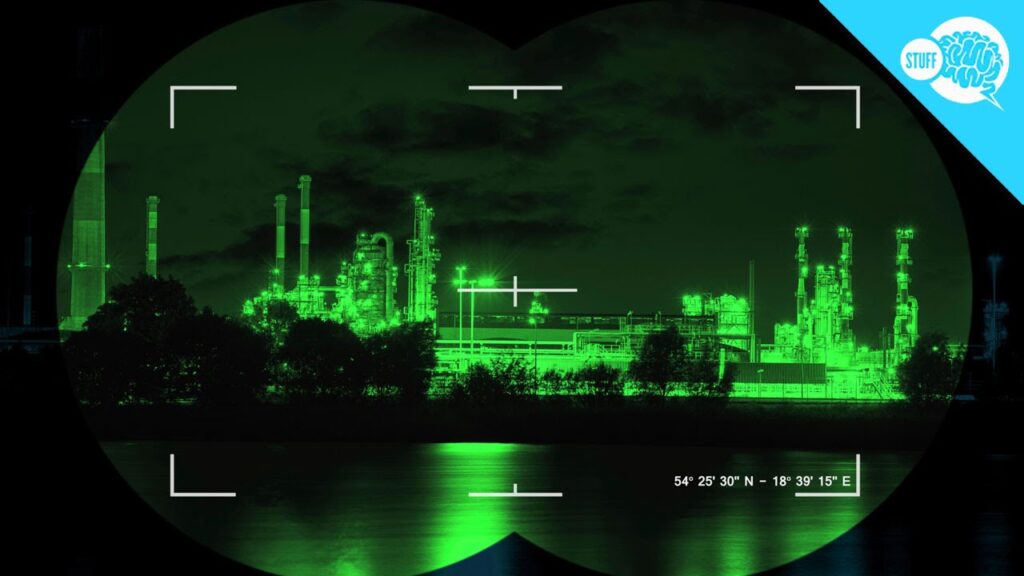
Night vision goggles have become a staple in various fields, from military operations to wildlife observation. These remarkable devices allow us to perceive the world around us even in conditions where our naked eyes struggle to see. However, it’s crucial to understand how these technologies function and their limitations. This article delves into the science behind night vision goggles, exploring their mechanisms, applications, and the essential role of ambient light in their operation.
This comprehensive guide will first explain the fundamental principles behind how night vision goggles work. We’ll then delve into the specific methods they employ to amplify existing light sources, enabling us to see in low-light conditions. Furthermore, we’ll examine the diverse applications of night vision technology across various industries and sectors. Finally, we’ll address the limitations of this technology, particularly its dependence on ambient light for functionality.
How Night Vision Goggles Work
Night vision goggles operate by capturing faint light sources present in the environment and amplifying them to a level visible to the human eye. This process involves several key components working in unison: an objective lens, an image intensifier tube, and an eyepiece. The objective lens gathers incoming light, even from extremely dim sources like moonlight or starlight. This captured light then enters the image intensifier tube, where it undergoes a series of transformations.
Within the image intensifier tube, the photons (particles of light) strike a photocathode, causing electrons to be released. These electrons are then accelerated and focused by an electric field onto a phosphor screen. The phosphor screen emits visible light in response to the electron bombardment, effectively amplifying the original light signal many times over. Finally, the amplified image is projected through the eyepiece, allowing the user to perceive the scene in enhanced detail despite the low-light conditions.
Types of Night Vision Goggles
There are two primary types of night vision goggles: image intensifier and thermal imaging. Image intensifier goggles, as described above, rely on amplifying existing light sources. Thermal imaging goggles, on the other hand, detect infrared radiation emitted by objects and convert it into a visual representation. This allows them to “see” heat signatures even in complete darkness, making them particularly useful for detecting living beings or identifying hot spots.
Amplifying Existing Light Sources
The core function of night vision goggles is to amplify existing light sources, effectively making the invisible visible. They achieve this by utilizing a process called image intensification. This involves capturing faint light photons and converting them into a stronger electrical signal that can be amplified and displayed as a visible image. The sensitivity of these devices varies depending on factors like the type of photocathode used and the gain setting.
The amplification process within the image intensifier tube significantly enhances the perceived brightness of the scene. This allows users to discern details in dimly lit environments that would otherwise remain hidden to the naked eye. However, it’s important to note that night vision goggles do not create light; they simply make existing light more visible.
Applications of Night Vision Goggles
Night vision technology has found widespread applications across diverse fields, revolutionizing operations and enhancing capabilities in various sectors.
Military and Law Enforcement
In military and law enforcement contexts, night vision goggles are indispensable tools for surveillance, reconnaissance, and tactical operations. They enable soldiers and officers to navigate hostile environments safely, identify targets effectively, and maintain situational awareness even under cover of darkness.
Wildlife Observation and Research
Wildlife biologists and researchers utilize night vision goggles to observe nocturnal animals in their natural habitats without disturbing them. This allows for valuable insights into animal behavior, population dynamics, and ecological interactions.
Search and Rescue Operations
During search and rescue missions, night vision goggles prove invaluable in locating missing persons or survivors in challenging terrain or adverse weather conditions. They enhance the visibility of rescuers and aid in identifying potential victims even in complete darkness.
Limitations of Night Vision Technology
While night vision goggles offer remarkable capabilities, it’s essential to understand their limitations. These devices are not a magic solution for seeing in absolute darkness; they require some level of ambient light to function effectively.
Ambient Light Requirement
The performance of night vision goggles is directly influenced by the amount of ambient light available. In extremely dark conditions with minimal light sources, the image quality may be significantly degraded, making it difficult to discern details or identify objects clearly.
Range Limitations
Night vision goggles have a limited range of visibility, which depends on factors like the intensity of the ambient light and the type of device used. As the distance from the light source increases, the image clarity diminishes, eventually reaching a point where objects become indistinguishable.
Conclusion
Night vision goggles are powerful tools that extend our ability to see in low-light conditions, but they operate by amplifying existing light sources rather than creating their own. Understanding how these devices work, their applications, and their limitations is crucial for utilizing them effectively and safely. While night vision technology has revolutionized various fields, it’s important to remember that it’s not a substitute for proper lighting or other safety measures in challenging environments.
